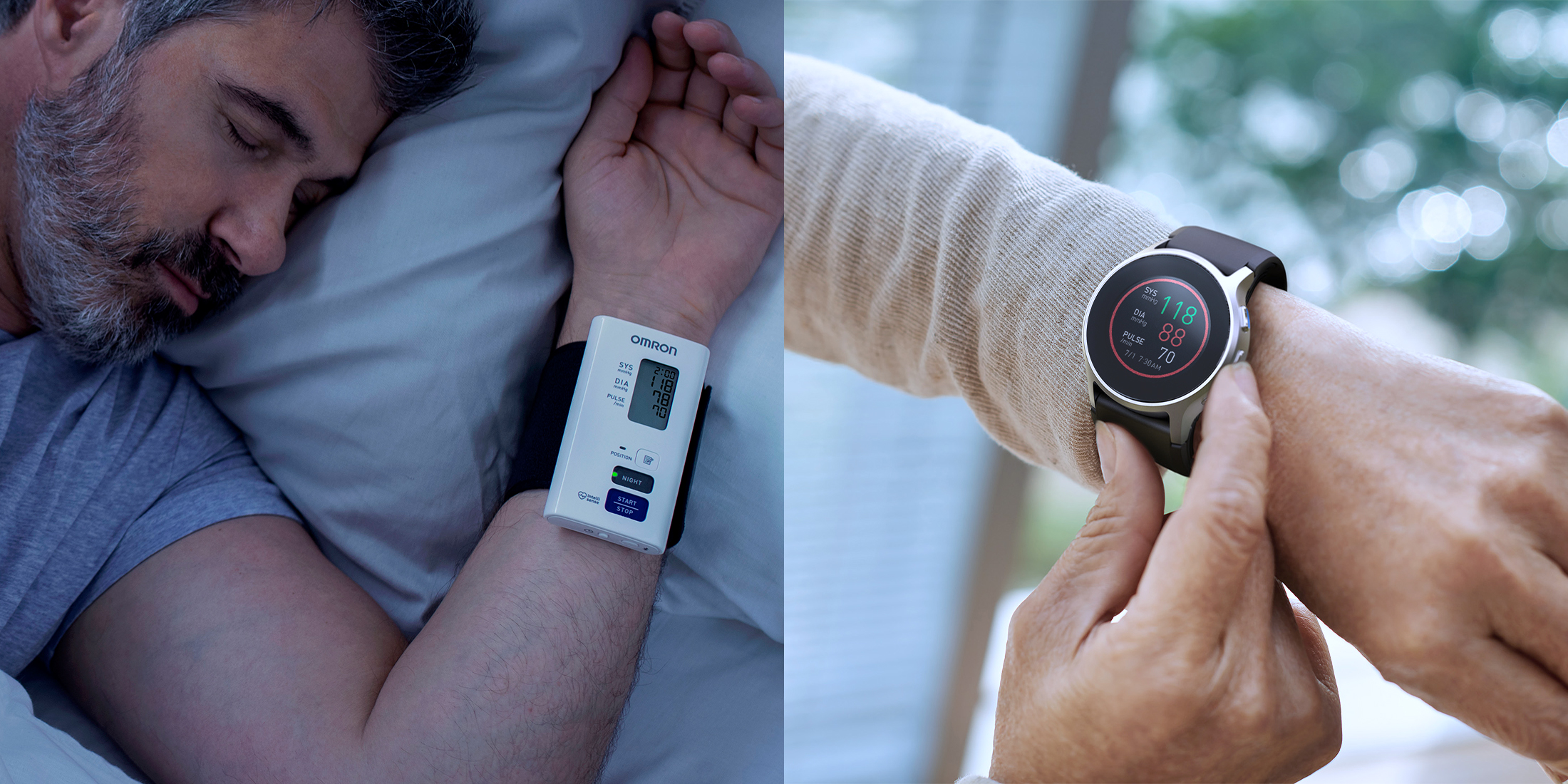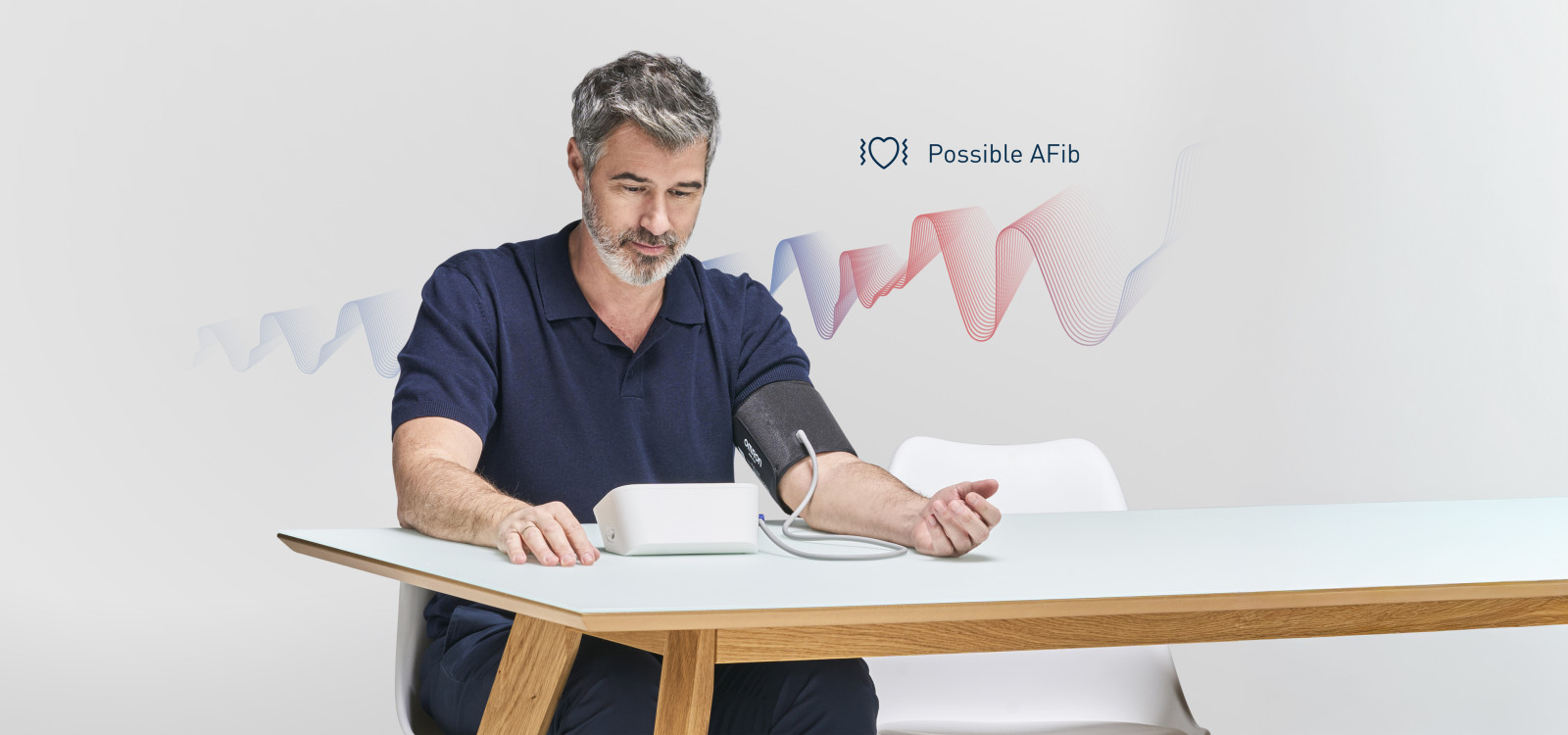Blood Pressure Monitors as Partners in Preventive Care
Celebrating 400 Million Devices from OMRON
Learn about our journey and our mission as we celebrate this momentous milestone.

Protecting Global Health Through Evolving Technology.
 From Measurement to Prevention: Going for ZERO Cardiovascular and Cerebrovascular Events
From Measurement to Prevention: Going for ZERO Cardiovascular and Cerebrovascular Events
For more than half a century, we have been promoting home blood pressure monitoring, driven by our desire to help people around the world live healthier lives.
Today, cumulative global sales of OMRON blood pressure monitors have exceeded 400 million units. But this is more than just a number—it represents the hopes of people striving to prevent illness and healthcare professionals committed to supporting their patients.
If all 400 million OMRON blood pressure monitors ever sold were lined up, the total length would be enough to circle the Earth. But what truly matters isn’t that distance; it’s what it represents: a connection with people around the world. Each device is a symbol of the trust we’ve built together as a partner in healthy living.
Blood pressure monitoring is evolving from measuring, to noticing, to preventing.
At OMRON, we are committed to expanding the possibilities of blood pressure monitors as essential tools for preventive care, supporting people everywhere in living longer, healthier lives.
From Measuring to Preventing. We will continue this journey together with you.
 Knowing Your Blood Pressure Is the First Step Toward Protecting Your Health
Knowing Your Blood Pressure Is the First Step Toward Protecting Your Health
Blood pressure fluctuates throughout the day. Many factors can influence it—such as the time of day, sleep, meals, exercise, stress, temperature, and emotions. And how each person responds to these factors can vary significantly. That’s why it’s so important to regularly monitor your blood pressure at home.
You may notice small signs like slight fatigue, heart palpitations, or shallow sleep.
These can sometimes be linked to changes in your blood pressure. By visualizing your daily blood pressure trends, you can become more aware of your physical condition and take the appropriate actions, such as consulting a doctor when needed.
OMRON’s 50-Year Journey in Blood Pressure Monitor Development
OMRON began developing blood pressure monitors for home use in 1973, a time when measuring blood pressure was considered something done only in clinical settings. But we believed that regular monitoring at home could help save lives.
Driven by that belief, we worked closely with physicians and medical societies to make it a reality.
From the beginning, we placed the highest priority on two principles: measurement accuracy and usability. Building on these core principles, we introduced the world’s first upper-arm blood pressure monitor equipped with fuzzy logic technology and making it easy for anyone to take accurate readings. We also took on the challenge of developing compact wrist-type and wearable monitors, so people could measure their blood pressure anytime, anywhere. To address nighttime hypertension, which often goes unnoticed, we developed monitors capable of capturing blood pressure during sleep.
 Hypertension and Atrial Fibrillation: Silent Risks
Hypertension and Atrial Fibrillation: Silent Risks
Hypertension is often called the “silent killer.” That’s because it usually shows no symptoms, yet significantly increases the risk of serious conditions like stroke and heart attack.
Another critical but often overlooked risk is atrial fibrillation (AFib). AFib is an irregular heartbeat often linked to high blood pressure. Over time, it can cause blood clots that may lead to stroke and reduce the heart’s ability to pump efficiently, raising the risk of heart failure.
Because both hypertension and AFib often go unnoticed and may occur infrequently, they can be difficult to detect early. But by monitoring your blood pressure regularly, you may be able to catch the warning signs and protect your life.
Leveraging Cutting-Edge AI and Digital Technologies
OMRON is accelerating innovation in blood pressure monitors to achieve its vision of Going for Zero: zero heart attacks and strokes. At the heart of this initiative is the integration of advanced AI and digital technologies.
-
Bluetooth Connectivity
Blood pressure monitors with Bluetooth automatically sync data to the OMRON Connect app. Users can track daily trends, notice changes in their condition anytime, and share results with family or healthcare professionals—making health management simple and seamless.
-
Dual-Function Devices & AI
We’ve also created devices that measure both blood pressure and ECG, along with models featuring IntelliSense AFib to flag potential risks during each reading. Advanced AI algorithms detect subtle early signs of irregularities, supporting faster intervention.
-
Remote Patient Monitoring Partnerships
Through partnerships with Luscii and Tricog Health, we are expanding into remote patient monitoring. This enables physicians to review patients’ home data in real time and provide timely care, a service already available in parts of Europe and Asia.
OMRON will continue its shift from measuring to preventing. As a partner that bridges healthcare and daily life, we are committed to shaping the future of preventive care and protecting lives.
IntelliSense AFib
A next-generation algorithm powered by AI technology that detects possible AFib during blood pressure monitoring. Built on decades of expertise and data, it helps identify early signs in high-risk patients and encourages timely medical consultation, supporting better prevention and care. The algorithm delivers high accuracy, with 95% sensitivity and 98% specificity1, and has received De Novo certification from the U.S. FDA.




Going for Zero
Preventive Care for the Health of Society
Hypertension is considered to be a risk factor for diseases such as myocardial infarction (heart attack) and stroke. OMRON Healthcare strives continuously for solutions to this health issue. We aim to focus our efforts and future challenges on reaching our goal of “Going for Zero.”
References
1 Diagnostic Accuracy for Detecting Atrial Fibrillation Using a Novel Machine Learning Algorithm in a Blood Pressure Monitor, Heart Rhythm published online 29 April 2024. DOI: https://doi.org/10.1016/j.hrthm.2024.04.086
